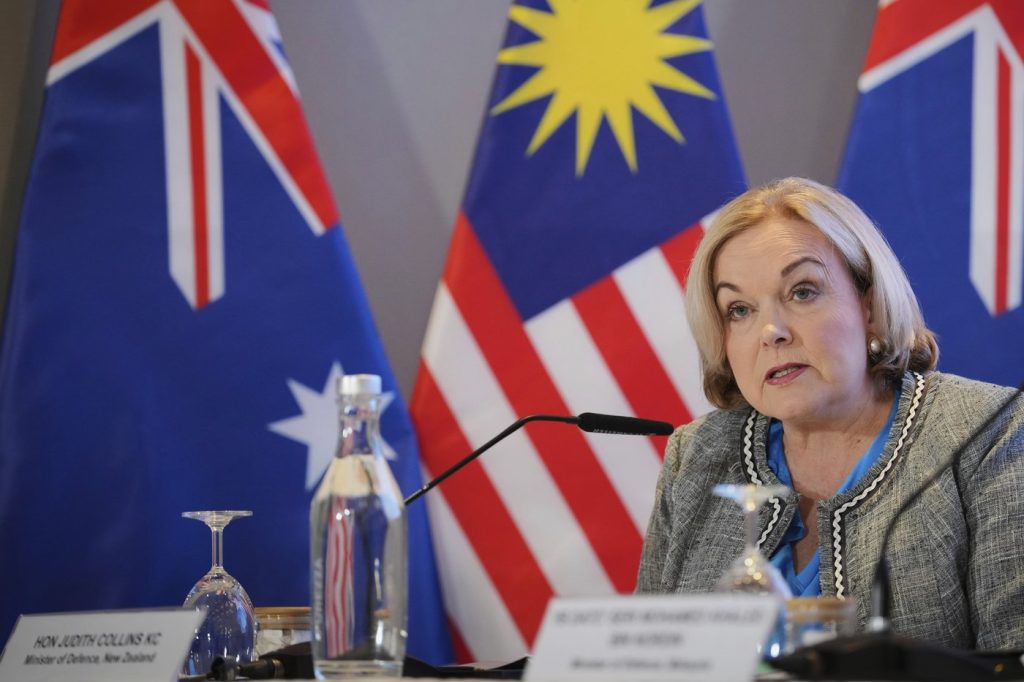WELLINGTON, New Zealand (AP) – The New Zealand government has announced a significant military spending package totaling 2.7 billion New Zealand dollars (approximately 1.6 billion USD) aimed at replacing aging aircraft, including helicopters that will be sourced from the United States, as stated by senior officials. The decision comes amid rapidly growing global tensions and a deteriorating security landscape, marking a notable shift in New Zealand's defense posture amidst strategic competition among major powers in the Pacific region.
In unveiling the military spending package, Cabinet ministers emphasized the unprecedented strategic challenges currently faced by New Zealand. Foreign Minister Winston Peters articulated that "we face the most challenging strategic circumstances in New Zealand’s modern history." This response also reflects New Zealand's military spending, which has historically lagged behind that of its larger counterparts in the Five Eyes intelligence-sharing group, which comprises the United States, Canada, Australia, the United Kingdom, and New Zealand.
The newly announced procurement of military hardware includes five MH-60R Seahawk helicopters intended to replace the aging maritime fleet, as well as two Airbus A321XLR aircraft to retire the aging Boeing 757s that have served for over 30 years. The helicopters represent a significant investment, accounting for more than 2 billion NZD of the total package. This procurement plan is part of a broader strategy where New Zealand aims to double its defense spending from 1% to 2% of GDP over the next decade.
Defense Minister Judith Collins emphasized the urgency of the procurement process, indicating that the helicopters will be acquired directly through the United States' foreign military sales program rather than through a wider tender. Collins noted that the final business case was expected to be reviewed by Cabinet ministers in 2026, and it would take "a few years" to acquire the helicopters due to anticipated wait times associated with purchasing new equipment.
Collins dismissed suggestions that the decision to purchase military equipment from the U.S. was a strategy to address trade imbalances, which have seen New Zealand goods subjected to a 15% levy under former President Trump's global tariffs plan. Furthermore, she mentioned that negotiations regarding lower tariffs with U.S. officials were not explicitly tied to this military purchase.
Earlier this month, leaders from New Zealand and Australia committed to stronger military ties, underscoring shared concerns regarding increasing competition from China in the South Pacific. The region, previously overlooked by Western powers, has become a focal point of geopolitical dynamics. Consequently, New Zealand finds itself needing to reposition its military capabilities, as the nation traditionally viewed its defense needs in light of its geographical isolation and relatively peaceful history.
Collins acknowledged the changing nature of warfare, stating that "distance no longer provides New Zealand the protection it once did," and emphasized the necessity of maintaining a proactive defense posture rather than delaying investments until a crisis arises. This change in perspective is particularly pertinent given the aging condition of New Zealand’s current military equipment, including the Boeing aircraft that have experienced breakdowns during governmental transport operations.
In summary, the transition to a more robust military capabilities strategy, which includes retiring the outdated Seasprite helicopters made by U.S.-based Kaman, reflects New Zealand's response to evolving global security challenges. This investment, while necessary, raises broader questions about the strategic positioning of small nations within an increasingly contested geopolitical environment.










